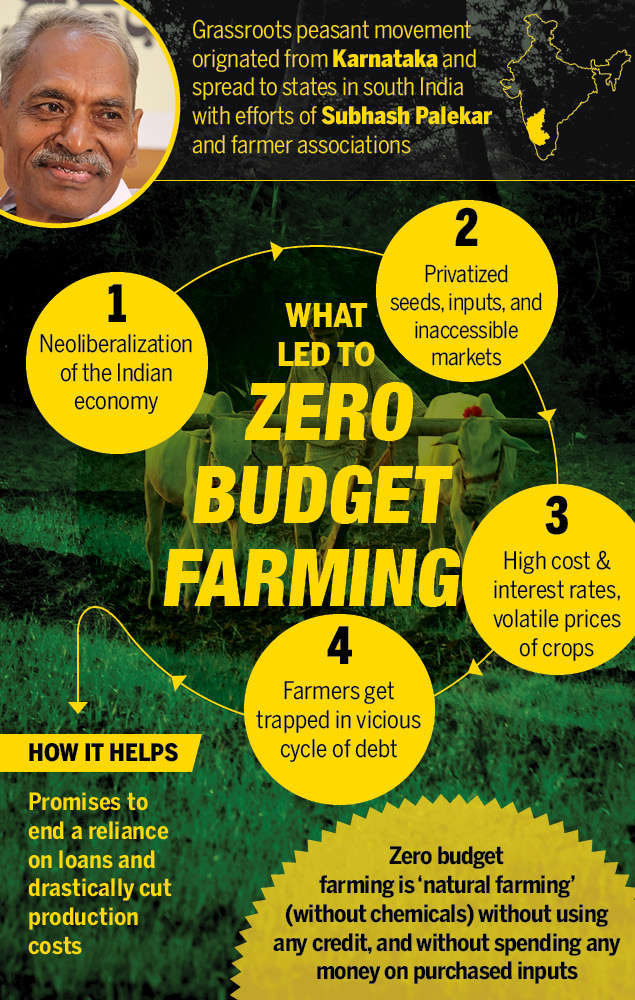A new study by the Center for Study of Science, Technology and Policy (CSTEP), Bangalore, published in February 2020, on Zero Budget Natural Farming has found considerable gains to farmers’ income from better yield and reduction in cost of energy and water use. Zero Budget Natural Farming, as the name implies, is a method of farming where the cost of growing and harvesting plants is almost zero. A Preliminary Study in Andhra Pradesh’ examined the nuances of Zero Budget Natural Farming (ZBNF) for select crops – paddy, groundnut, chili, cotton, and maize – in terms of water and energy consumption, emission, yield, and cost of cultivation. Key findings include:

- Water and electricity consumption (50%-60%), life cycle energy consumption (45%-70%), life cycle emissions (55-85%), cultivation cost (10%-40%) in select irrigated crops.
- Yield: The yield difference between ZBNF and non-ZBNF for chili and paddy is negligible. For the remaining crops, non-ZBNF exhibits higher yields, with an increase in the range of 0.3–0.7 Mt/acre.
- Improved farmer income: Reduced dependency on inorganic chemical-based fertilizers shows higher revenue potential, even when yields from select crops are lower.
- Improved health: Reduced dependency on inorganic components promotes healthier farming lifestyle.
- Road to sustainability: Promotion of mulching reduces environmentally-damaging practices like residue burning; similarly, multiple aeration method reduces methane emissions from paddy fields.
The study recommends a deeper investigation to further verify and validate the scientific nature of ZBNF prior to large-scale adoption.
On cost of cultivation, the report found savings of Rs 3,000– Rs. 22,000 per acre, except in cotton. The net revenue is seen to be higher in ZBNF by INR 9,000–INR 37,000 for all the crops (except rainfed-based cotton and chili).
Most responses from farmers indicate a positive outlook towards ZBNF, in terms of ease of production and health impact due to avoidance of inorganic pesticides.
Read full report – https://www.cstep.in/drupal/sites/default/files/2020-02/CSTEP_RR_ZBNF_18Feb2020.pdf










